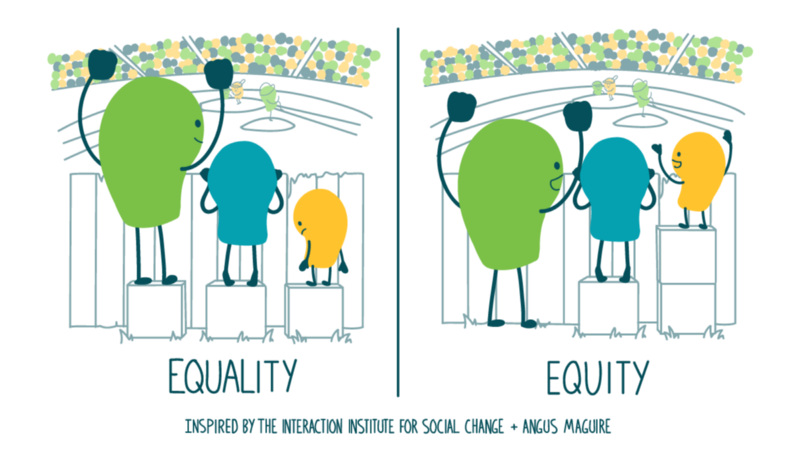
Here at We ❤ Health Literacy Headquarters, we really enjoy talking about how health communicators (like you!) can help address health disparities. And since COVID-19 affects some groups far more than others, addressing disparities in our health materials is as urgent as ever.
So this week, we want to take a closer look at the difference between equality and equity. The George Washington University has a great resource explaining the difference, but we’ll give you a quick summary:
- Equality means giving equal resources or opportunities to different people or groups. Think of a food bank offering a standard box of food to all of its clients.
- Equity means giving each person or group the resources or opportunities they need to reach an equal outcome. So maybe that same food bank offers customized food boxes based on clients’ household size and dietary needs — and has a delivery service for folks who can’t physically get to the food bank.
How does this apply to health communication, you ask? Providing the same information to everyone, in the same format, doesn’t mean everyone will have equal access.
As you’re developing health materials, get to know your audience — or better yet, actively involve people from your priority audience in the process of creating your materials.
Then ask yourself how you can ensure an equal outcome for as many people as possible — especially those facing structural barriers or disadvantages. For example, depending on your audience, you might:
- Create bilingual materials to help reach audiences with limited English proficiency
- Partner with trusted messengers to boost your credibility with marginalized communities
- Make sure your web content is accessible to everyone — that means considering things like alt text, keyboard navigation, color contrast, and much more
- Use pictograms to represent key ideas in a way that’s accessible to people with limited literacy skills, cognitive disabilities, or other communication challenges
The bottom line: To tackle health disparities, go beyond one-size-fits-all communication materials — and remember that equal resources don’t always lead to an equal outcome.
Image inspiration courtesy of Interaction Institute for Social Change and Angus Maguire.
Browse recent posts